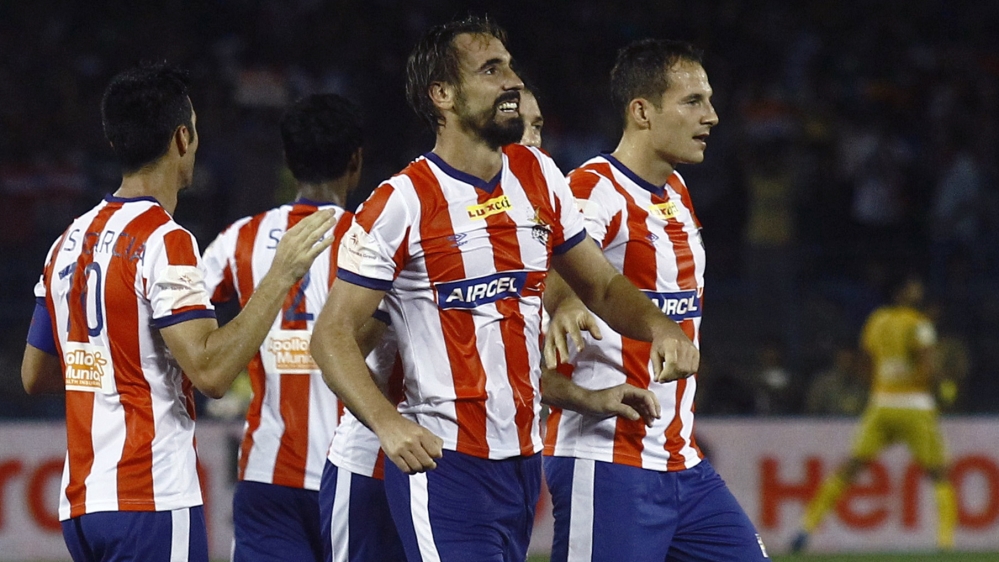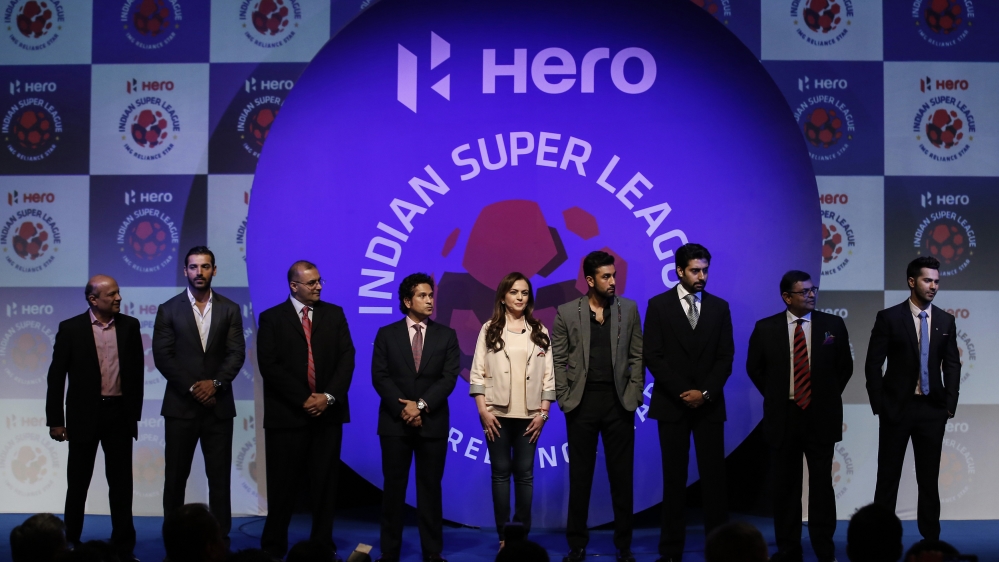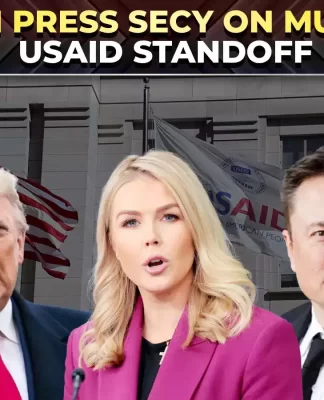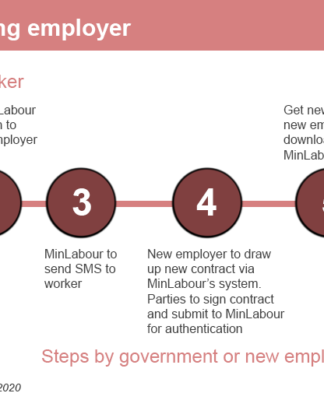India’s fiercest footballing rivalry appears to be under threat from the country’s bold new Super League experiment.

Editor’s Note: This article forms part of a series of content being produced for Al Jazeera in association with the launch of its new football podcast, Game of Our Lives.
—
India was still under British control when East Bengal Football Club faced Mohun Bagan AC for the first time in the northeastern city of Kolkata’s football league in 1925.
It was the first edition of what is now known as the Kolkata derby, a rivalry that has persisted through the decades into the 21st century.
Matches between the two teams have long attracted enormous crowds – sometimes in the region of 100,000 fans – and their rivalry is celebrated in Bengali popular culture and lore.
But both clubs are at risk of being eclipsed in their own city.
They are currently locked in a showdown with Indian football’s governing body, the All India Football Federation (AIFF), about joining the Indian Super League, a cash-rich franchise-based football tournament started four years ago.
Historic clubs in India such as Mohun Bagan and East Bengal fear that they are about to be left by the wayside as the country embraces a bold new footballing future.
An old rivalry
Despite being the second most populous nation in the world, India is not known internationally for its pedigree in football; the country has never competed in the World Cup and currently sits 97th in the world in FIFA rankings.
But in the Kolkata derby, India boasts an immense football tradition.
At the outset, East Bengal and Mohun Bagan were the only “native” teams allowed to participate in the top tier of the Kolkata regional league.
The rest of the teams in the league were made up of British soldiers and civilians.
Against the backdrop of India’s independence movement, Bengalis took great pride in watching Indian players beat better-equipped British sides.
Famously in 1911, a barefoot Mohun Bagan team won the pre-eminent cup competition in Bengal, defeating a British regiment team in the final.
At the same time, a fierce underlining rivalry was brewing between the two clubs.
Formed in 1889, Mohun Bagan drew the support of the supposed “natives” of Kolkata. Throughout the early 20th century, Kolkata saw waves of migration from the eastern half of Bengal, the region that is now the nation-state of Bangladesh.
Newcomer “East Bengalis” often experienced discrimination from those who considered themselves indigenous to the city. This mistreatment extended to the football pitch.
The omission of a much-respected midfielder from Dhaka in a cup game on July 28, 1920, spurred other East Bengalis to form a club that represented their community.
“The sense of being looked down upon wasn’t just limited to the players, but was also felt among those who had settled in the city from East Bengal,” Gautam Roy, East Bengal FC’s media officer, told Al Jazeera.
At independence in 1947, when Bengal was partitioned between India and Pakistan, many more East Bengalis moved to Kolkata.
The rivalry between native and newcomer took on further intensity. Mohun Bagan AC and East Bengal hated losing to each other. In the Durand Cup semifinal of 1957, Mohun Bagan AC were leading 2-1 at half-time and seemed on course to defeat their arch-rivals.
Fearful of the shame of losing, East Bengal management beseeched their players in an oddly ceremonial way to turn the game around.
JC Guha, then secretary of the club, touched the feet of each of his players – an act of deference normally reserved for elders – so they would understand what was at stake.
Stirred by the urgency of this action, East Bengal mounted a comeback in the second half to emerge victorious 3-2.
 |
| East Bengal fans are fearful as India embraces a new footballing future [Sucheta Das/Reuters] |
Not all their encounters have had such grace. In 2012, the derby had to be abandoned at half-time because of chaos both on the pitch and in the stands.
A Mohun Bagan player was hit with an object thrown from the crowd and had to be hospitalised. Police charged rowdy supporters on the terraces of the stadium.
Mohun Bagan refused to play the second half and were fined and docked all the points they had accumulated in the league that season.
The team managed to avoid relegation though, and recovered to win the league in the following season.
The derby remains intense many generations after the teams were first formed.
East Bengal hold the upper hand in the derby, having won 120 of their 321 encounters with Mohun Bagan and losing only 90 times.
However, East Bengal have not won the national league in 14 years, while Mohun Bagan last were champions in 2015.
A new league
While football has always been popular in Bengal, cricket has proved to be a significantly more commercially successful sport across India.
Domestic and international cricket attract massive TV rights deals and huge countrywide audiences, thus leaving very little for other sports to feed off.
 |
| The ISL debuted in 2015 with eight city-based franchise clubs [Danish Siddiqui/Reuters] |
The Indian Premier League, an extravagant and lucrative cricket tournament launched in 2008, exemplifies the glamour and riches now associated with the sport.
After trying for many years to market and run a professional football league in cricket-crazy India, AIFF in 2010 agreed on a multi-million-dollar deal with Reliance Industries, the largest publicly-traded company in India, and the US-based International Management Group (IMG), to in effect privatise the management of Indian domestic football.
The deal gave IMG-Reliance all commercial rights to football in India, including sponsorship, advertising, broadcasting, merchandising, film, video and data, intellectual property, franchising and new league rights for the next 15 years.
The news of this big injection of money into Indian football was received with much fanfare.
Initially, it seemed the money would go to restructuring the I-League, the existing national football league which included historic clubs such as Mohun Bagan and East Bengal.
But the new promoters soon expressed interest in starting an entirely new franchise-based league.
The new tournament – dubbed the Indian Super League – aimed to mimic the success of cricket’s IPL.
Like the IPL, each iteration of the ISL lasts only an abbreviated period of a few months (far shorter than the conventional football season of nine months), is loaded with celebrity owners and packed with advertising and corporate glitz.
It debuted in 2015, with eight city-based franchise clubs including Atletico de Kolkata (now known simply as ATK), a team placed in the midst of Mohun Bagan’s and East Bengal’s support base.
 |
| ATK is one of the Indian Super League’s Kolkata-based franchise clubs [Rupak De Chowdhuri/Reuters] |
I-League teams were unhappy with the introduction of the ISL, but with AIFF siding with IMG-Reliance, there was not much they could do but watch money and eyeballs turn to the shiny new league.
Proponents of the ISL argued that the I-League had squandered its opportunity to build football in the country.
I-League clubs held complete hegemony in India for the last few decades, but, with a few exceptions, had failed to attract significant local audiences, generate the revenue needed to reinvest into players and infrastructure, and were frequently accused of inefficiency and mismanagement.
Officially, the I-League continues to be India’s top division as recognised by both the Asian Football Federation and FIFA, football’s global governing body.
But the ISL, with its big money and prime-time TV deals, coupled with a fair quotient of Bollywood celebrities and cricket stars as owners, has taken all the limelight away from the I-League.
Roy claims that the ISL and the new club ATK have not affected their fan base. But he concedes that the competition for top players between I-League clubs and the wealthier ISL clubs has proven to be tough.
He fears that the history and ingrained tradition of East Bengal in Kolkata is being overlooked.
“Our home games have attendances of over 30,000. Atletico de Kolkata can never match that. We want to join the ISL but our contribution to Indian football needs to be recognised,” he says.
A possible merger?
Over the last four years, there have been regular talks regarding the possibility of both East Bengal and Mohun Bagan joining the new league.
Negotiations faltered over two key points: both clubs have refused to pay the mandatory 150,000,000 rupees ($3m) deposit to IMG-Reliance to join the league or bow to pressure to move outside of Kolkata, in keeping with the ISL’s “one city, one club” rule.
This latter restriction, critics suggest, was devised to help bolster the following for ATK in a city already divided between East Bengal, Mohun Bagan and other historic clubs.
“Why should we pay the deposit or move out of Kolkata to be accommodated into ISL?” asks Anjan Mitra, secretary of Mohun Bagan AC.
According to Mitra, it is unfair to expect Mohun Bagan to pay such an astronomical deposit to join the new boys. He suggests that such a storeyed and old team should not have to prove its solvency.
“We are not a club that was started a few years ago. We have been running this club for over a century. If they are worried we may shut down suddenly some day then they are totally wrong,” he told Al Jazeera.
He said if the ISL manages find a sponsor willing to pay the $3m deposit on the club’s behalf without demanding changes to the club’s existing management, Mohun Bagan AC will join the ISL.
Some observers believe that including these historic clubs in the new ISL would be the obvious thing to do.
“It has been quite a needless quarrel so far,” Novy Kapadiya, a historian of football in India and author of Barefoot to Boots: the Many Lives of Indian Football, told Al Jazeera.
“Mohun Bagan and East Bengal are the most passionately followed clubs not just in India, but all of Asia. Their inclusion in the ISL will only make it bigger and better.”
Suvadeep Bose, a 30 year-old IT professional, is a fourth-generation East Bengal fan.
He cannot imagine turning his loyalty to ATK.
“Growing up in my family, there has been only one club that could be supported and that was East Bengal. It is the club we have grown up adoring,” Bose told Al Jazeera.
 |
| East Bengal supporters enjoy a kickabout in one of Kolkata’s parks [Adnan Bhat/Al Jazeera] |
Sankhya Chatterjee, 34, another East Bengal fan, agrees with Bose.
“The ISL is just about money and glamour. There is no legacy or drive to improve football in the country,” Chatterjee said.
Such sentiments are shared across the traditional footballing divide of Kolkata.
Ankit Roy, 28, a childhood supporter of Mohun Bagan, accepts that both the big Kolkata clubs can learn from the marketing strategies of ISL teams.
But he does not see how ATK and the ISL can really uproot Kolkata’s traditional clubs.
“In the previous years, it would be East Bengal and Mohun Bagan fans who would go to watch the ATK matches,” he told Al Jazeera.
“But this year, since both ISL and the I-League were running simultaneously, there was a massive dip in support for ATK.”
Average attendances for ATK matches have plummeted from an average of over 45,000 in 2014 to just over 12,000 in 2017.
Will Indian football relegate the tradition of the Kolkata giant clubs Mohun Bagan and East Bengal to the sidelines?
There is now pressure on the country’s football authorities from the outside to figure out a conciliatory way forward.
Both FIFA and the Asian Football Confederation have asked AIFF to merge the two league within the next few years.
It remains to be seen how a balance between the imperatives of legacy and capital will allow the integrating of the old I-League clubs into the new future of the ISL.
SOURCE: AL JAZEERA


























